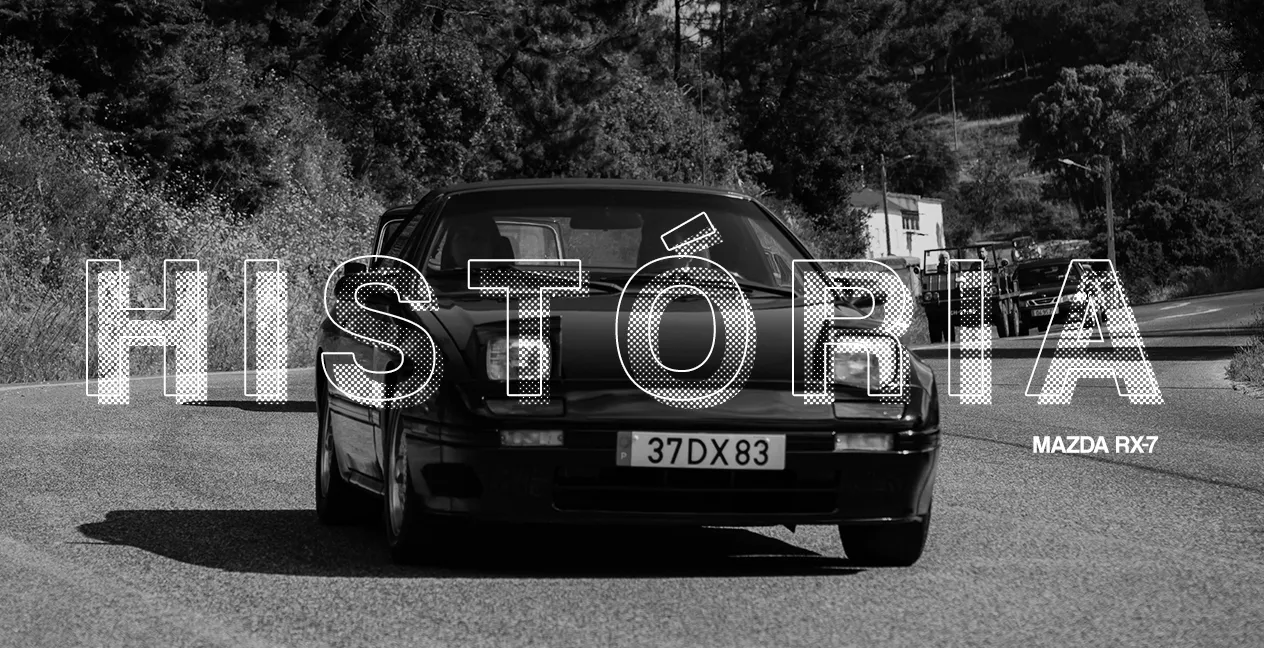
Created by Luís Belo at Monday, 14 April 2025
The History of the Mazda RX-7
The Mazda RX-7 is a name that transcends generations and borders.Since its debut in the late 70s, it has become one of the most respected Japanese sports cars of all time, not only for its elegant design and dynamic behavior but mainly for the Wankel rotary engine, a unique mechanical solution that made it immediately distinct from all its competitors.
History
Launched in 1978, the Mazda RX-7 hit the market as the spiritual successor to the RX-3, at a time when Japanese manufacturers were seeking to establish themselves in the compact sports car segment.The big novelty of the RX-7 was the rotary engine—a bold bet by Mazda that would become its trademark.
Over three generations (SA22C/FB, FC, and FD), the RX-7 evolved both in terms of engineering and design, always keeping the Wankel engine as the centerpiece.The philosophy was clear: to create a light, balanced, and fun-to-drive coupe.This approach earned it a legion of fans worldwide and a career filled with successes on the road and track.
The RX-7 was discontinued in 2002, being replaced years later by the RX-8, although with a quite different approach.
Versions
The first generation (SA22C/FB), produced between 1978 and 1985, featured a simple and lightweight design, with the 12A rotary engine delivering around 100 hp. In some markets, versions with turbo and 13B engine appeared. It was a model with excellent weight distribution and surprising handling in curves.
The second generation (FC), between 1985 and 1991, was aesthetically inspired by European sports cars like the Porsche 944.This version received an independent rear suspension, comfort improvements, and more powerful engines — including the 13B Turbo with around 200 hp. It became more sophisticated, but retained its sporty DNA.
The third and final generation (FD), produced between 1992 and 2002, is considered by many to be the pinnacle of the RX-7 series.With a fluid and aggressive design, the model used the 13B-REW biturbo engine, with power ranging from 240 to 280 hp, depending on the market and version. It was an extremely light, precise, and fast car — a true Japanese thoroughbred that is still a benchmark in terms of dynamic behavior today.
Numerous special editions were released, especially in Japan, such as the Spirit R, Type RZ, and Type RS, which are now highly valued by collectors.
Curiosities
The RX-7 is one of the few mass-produced cars to exclusively use the Wankel rotary engine;
He won the 24 Hours of Spa-Francorchamps in 1981 and competed successfully in various categories of motorsport, including IMSA and the Japanese Touring Car Championship;
The FD generation is one of the favorites in the tuning world and was immortalized in cinema, as in the Fast and Furious saga, driven by the character Han;
The lightweight and compact engine configuration allowed for excellent weight distribution, helping to create one of the most balanced driving experiences in the segment.
It is one of the most sought-after models in the Japanese classic car market, with values consistently rising in recent years.
In Portugal...
The Mazda RX-7 has always had a discreet presence in the Portuguese market.With very limited sales, especially of the FD generation, most of the examples that circulate in Portugal today are imports by enthusiasts who sought this model out of passion and not convenience.
During the 80s and 90s, it was rare to see an RX-7 on national roads, which only increased its exotic status.The complexity of the rotary engine and the scarcity of parts and specialized technicians limited its expansion, but also helped preserve the mystique of the model.
Currently, the RX-7s are highly valued among collectors and fans of the JDM (Japanese Domestic Market), being a regular presence at Japanese classic car meets and tuning events.
The Mazda RX-7 is more than just a car; it is a legend with its own engine, a symbol of Mazda's boldness and an era when ingenuity and passion spoke louder than numbers.
Articles that may be of interest to you:
The History of the Volkswagen Golf
The History of the Toyota Supra
Translated with deepl.com






